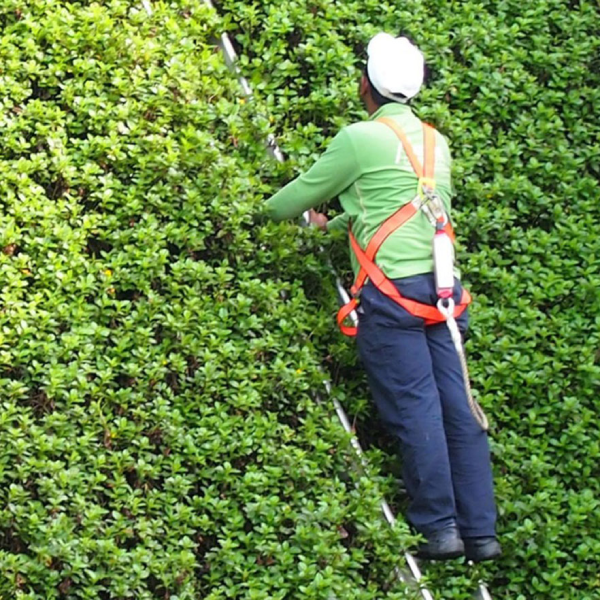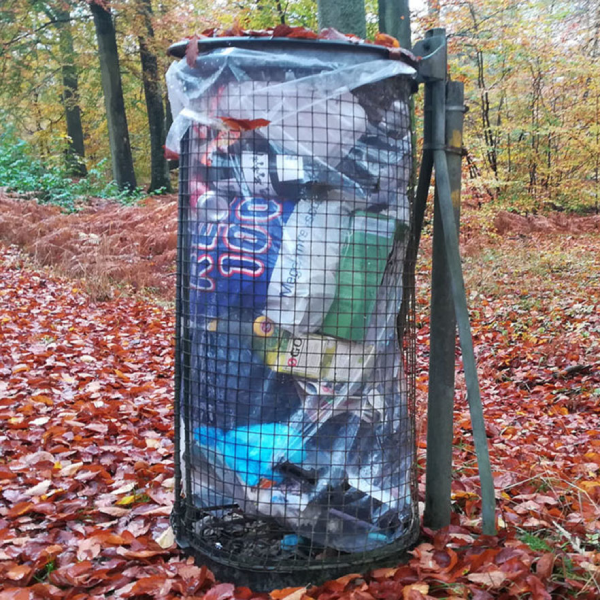GARDENING
Lawn | Remove turf
{{ errorMessage }}
Garden help
Turf removal
Smaller tasks
GRASS
Remove turf
If you want to have many different species next to each other, a high diversity, the prerequisite is that the soil is nutrient-poor. The importance of nutrients for high diversity is very crucial for success with biodiversity. If there is a lot of nutrients, you will get a single species or a few species.
If there is a shortage of nutrients, the plants will not be as big and strong while there is room for many species. So if you want to have a flourishing garden, you should do the exact opposite of what tradition prescribes! Instead of adding fertilizers, you should exhaust the soil.
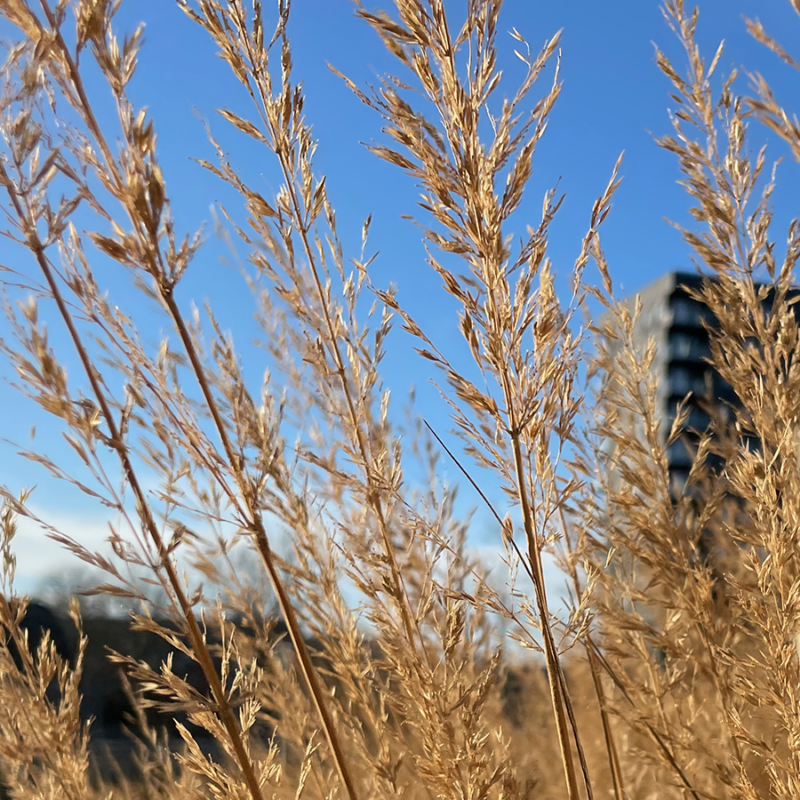
It can be a long process to turn your lawn into a flowering meadow. The soil must be tilled before nature can move in. If you do not want to remove the top layer of the lawn, the turf, there are other options.
You can start by sowing grain or another nutrient-demanding plant. When the grain is harvested, the nutrients it has absorbed from the soil are removed along with the grain. And in this way, a lot of nutrients are removed from the soil.
It takes patience to till a lawn, as it is traditionally planted on rich topsoil and has often been supplied with several nutrients over time. It is always a faster way to strong and diverse biodiversity to remove the turf completely. And you avoid spreading a whole lot of seeds on the lawn to no avail.
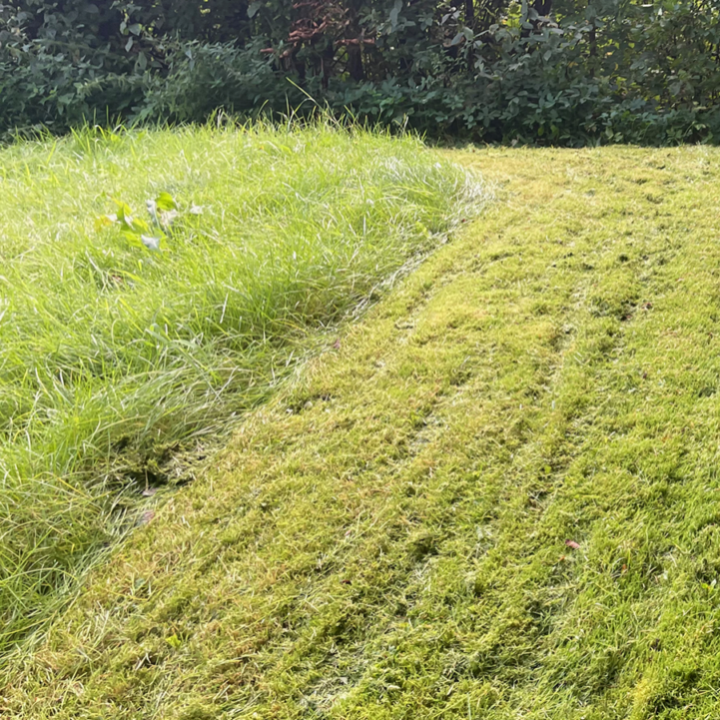
There are many reasons why people look for alternative ways to avoid having to dig up the lawn. First and foremost, there is of course the economy.
But it is often the case that machines cannot enter the land – not even a small mini excavator, unless you start removing hedges, or let the machines run through old rose beds and well-established gardens.
In a quick search for an alternative to peeling the top layer of turf from the lawn, we find many very creative suggestions.
Not so long ago, we used weed killers, Roundup, to quickly get rid of unwanted growth. Fortunately, we have become wiser and understand that this is very rarely the right solution.
Another well-meaning piece of advice is to mow the entire lawn until the grass is dead. But when we open it up again, the grass will still be stronger than the flower seeds we want to have taking over.
A romantic piece of advice is to borrow some free range pigs or sheep and let them loose. But in reality these animals will cause a lot of havoc, they will not only eat the grass, but everything they can get close to, and their feces will add to the soil exactly what we want to avoid, namely nutrients!
If it is possible to get hold of a smaller machine, you can naturally come up with the idea that the solution is to mill the lawn. Maybe just to a shallower depth. But that is not the best idea.
First, everything is done very unevenly. It requires a lot of effort to get the soil leveled out again. And secondly, all the nutrients in the grass are spread throughout the soil – which we want to avoid since we are aiming for nutrient-poor soil that nature will quickly consume.
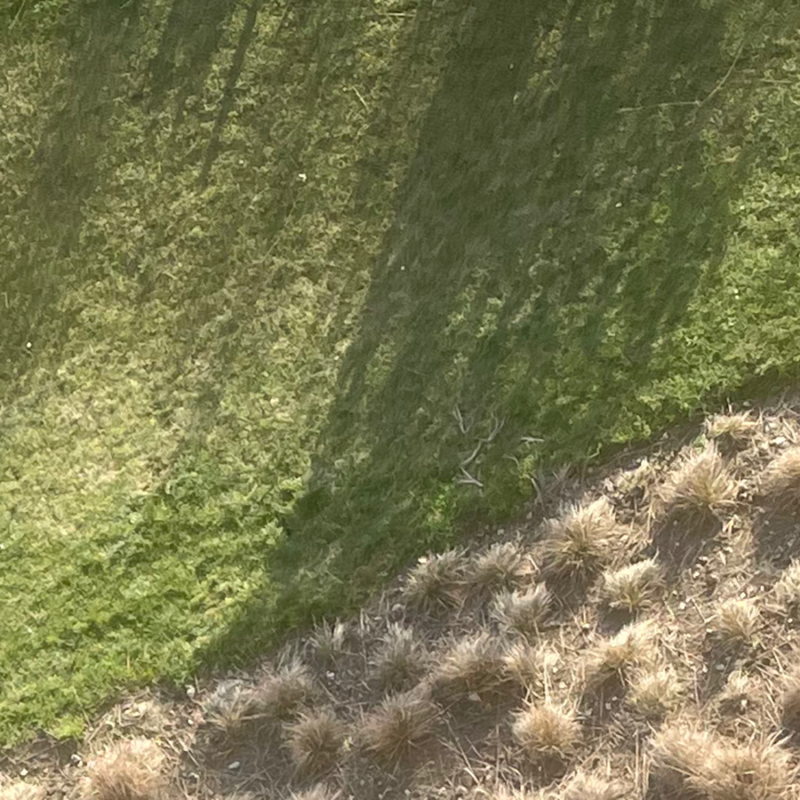
You may have been foresighted and cut the grass all the way down to the ground during the last mowing. Over the winter, frost and drying out will kill large parts of the lawn. And it is thus easier to remove.
Many pieces of turf quickly appear when you start peeling the lawn, with a machine or digging the soil manually with a spade. And that is why many choose a solution where they do not dispose of the turf, but turn the turf downwards.
However, this means that nutrients remain in the soil and if biodiversity is to be strengthened, the soil must be exhausted. Therefore, it is definitely worth the effort to dispose of turf. Or better yet, use it to create small hills in the garden, as biodiversity loves variety when your garden imitates real nature, where everything is winding, hilly and yes… natural!
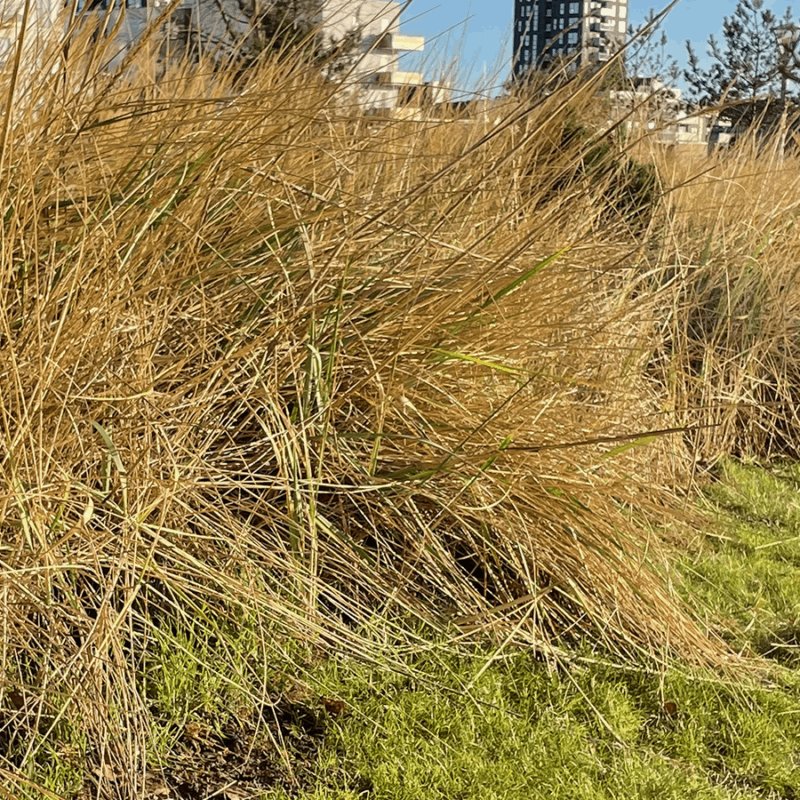
One might be led to believe that grass is the biggest enemy of biodiversity. But that is not the case. The challenge is “the lawn”. Grass is certainly quite aggressive and dominant, so it will outcompete many other species, and that means that biodiversity will be low. But all species are “aggressive” as such if they are given the right living conditions.
The only thing you need to be aware of with grass is that we have traditionally created ideal conditions for grass in our lawns – and if we want biodiversity to succeed, we need to give other species a chance to establish themselves.
If you want an organic way to kill the grass, you need to mow it down in several passes. Here, the soil is turned over so that the grass slowly dies out. However, this can quickly result in your otherwise fine garden looking like a ploughed field, a battlefield, messy and uneven, with half-frozen piles of turf scattered randomly around!
A turf cutter is designed to cut through the grass roots and the top layer of soil to create a clean cut that makes it easy to remove the pieces of turf. It is a quick and effective method of removing turf.
Here you “peel” off the top layer of the lawn. This is a very effective method and will transform your garden into the most beautiful flower park in a very short time. However, there are a few challenges you need to be aware of to ensure your success.
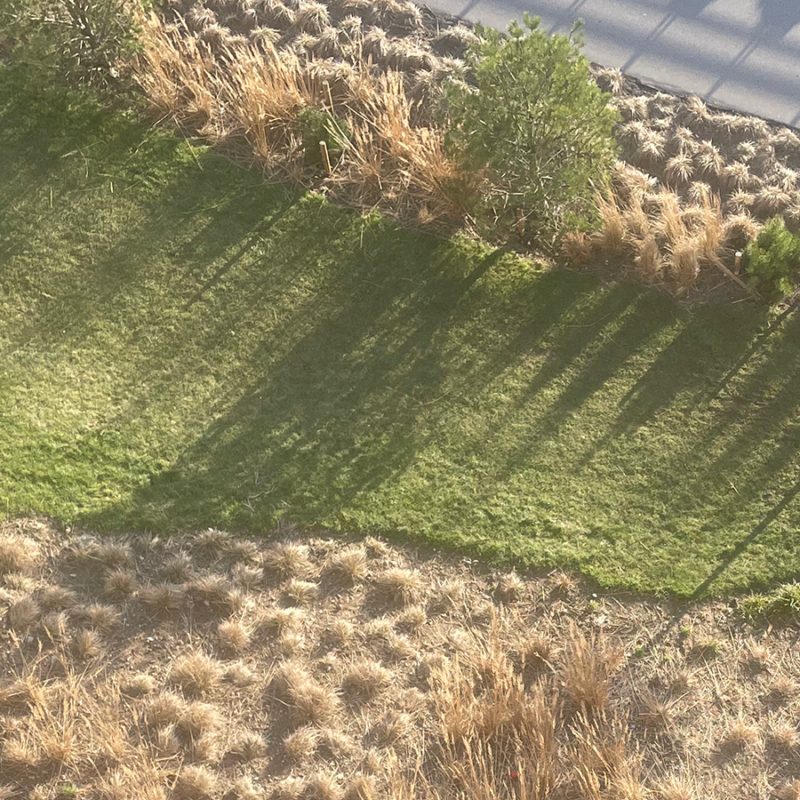
Most species of insects place their young in nests deep in the ground, and often in such an area where there is plenty of vegetation. They know there will be more the following year, so that is a smart place. They do this in the fall, among other things, so that some can overwinter and be ready for spring.
If you decide to replant your area, you should not do it in late fall or winter, as you will destroy next year’s brood. So if a garden tiller or plow messes everything up, it is more destructive to biodiversity and insects than it is beneficial.
The turf removed from the lawn will be difficult to decompose quickly. If it is simply thrown on top of the compost pile, you risk slowing down the process for the rest of the compost. And since it is often a matter of large piles, it is good to have a plan for the turf.
You can of course throw it in a trailer and then take it to the nearest recycling center. But it is better to use it as an opportunity to make your garden a little hilly. Biodiversity loves when nature is varied, hilly, and hilly. So use it as small hills in your garden. Put some soil on top.
Over time, your mounds will become quite small as the grass turns to soil, but you can add more soil if you like the hilly landscape.
If you choose to compost the turf, put the turf in a pile and it will turn into fine topsoil within a year. Turn the root side up or cover with black plastic or similar to prevent it from growing back. The pile of turf can quickly become quite large, so it is a good idea to peel it as thinly as possible.

When calculating a price for turf removal, i.e. peeling the top layer of grass, we need to decide what to do with the turf. Should we dispose of it, collect it in a pile, or put the turf in compost?
We also need to decide whether you want us to add gravel and sand after we have removed the grass. This can be beneficial for leveling the area so that it is level and flat. And it can be beneficial because it helps to loosen the soil, which the wildflowers prefer.
And finally, we also need to decide whether we should spread a seed mixture over the area to promote biodiversity and so that there is rapid lush growth in the area.
